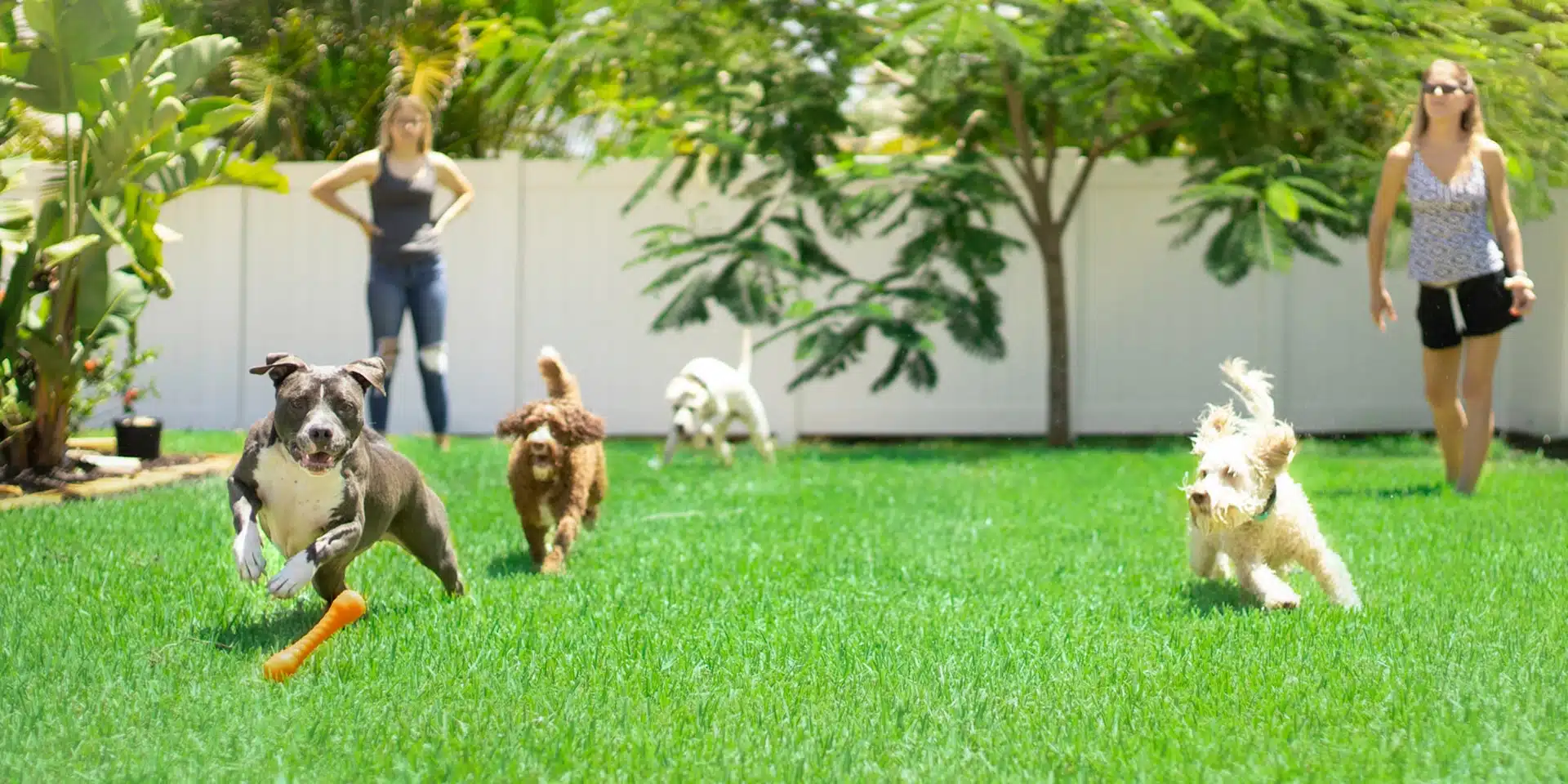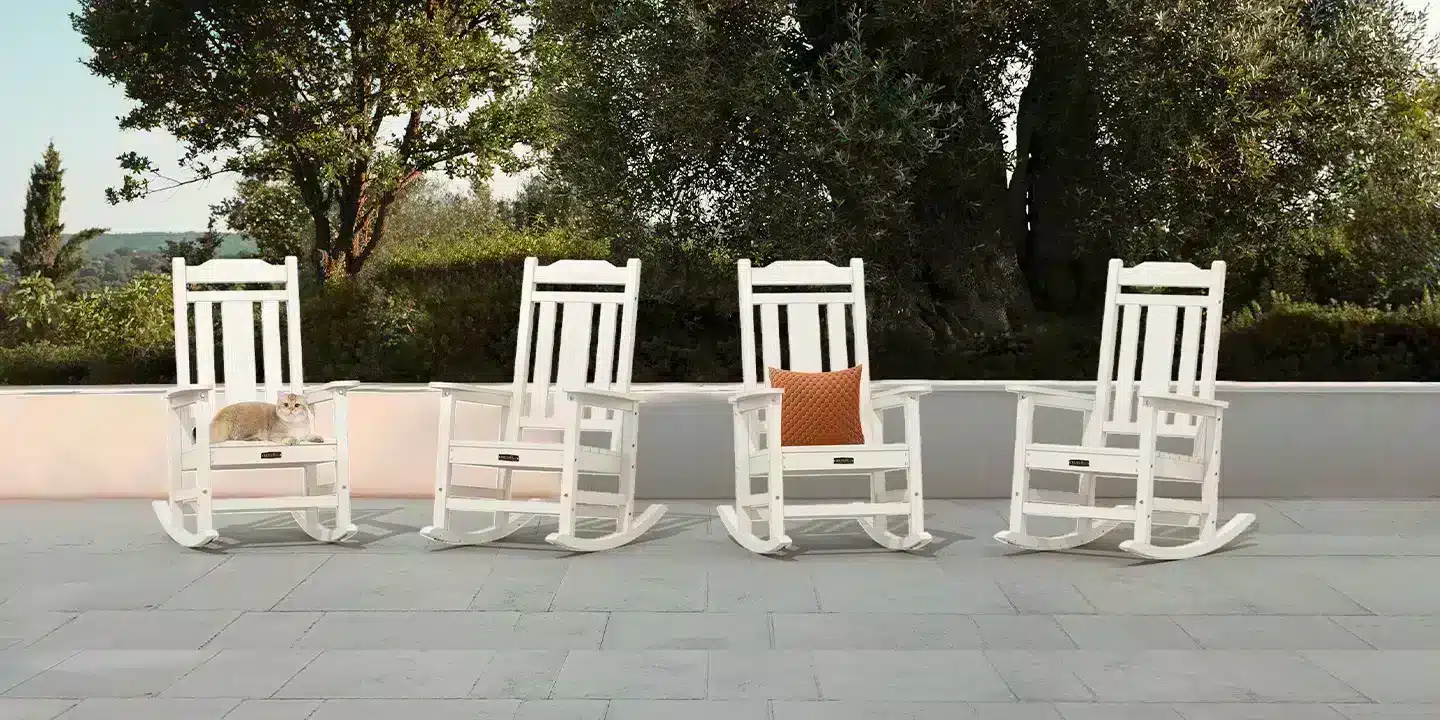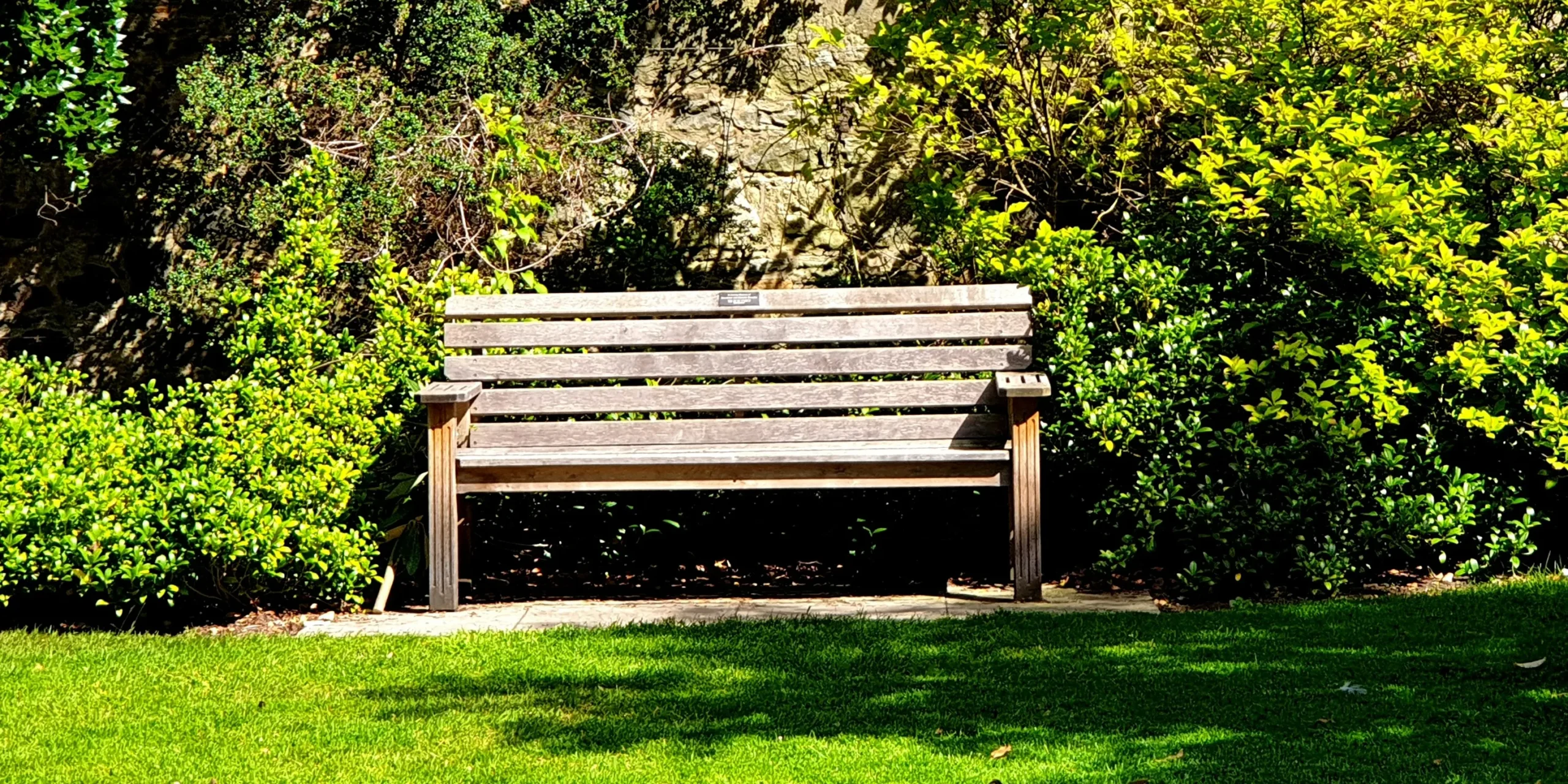A patio is more than just an extension of your home; it’s a place where your family can relax, enjoy meals, and make memories. However, if you have kids and pets, ensuring their safety in this outdoor space becomes a top priority. While patios are designed to be fun and functional, they can also pose risks if not properly secured. In this blog, we’ll share 13 practical outdoor safety tips that will help you create a safer environment for your family.
1. Choose Kid and Pet-Friendly Furniture
When selecting furniture for your patio, it’s essential to consider pieces that are sturdy and stable. Kids and pets are often curious and playful, so wobbly chairs or tables can easily tip over, causing injury. Opt for furniture with rounded edges to avoid sharp corners that could lead to cuts or bruises.
Additionally, look for weather-resistant materials that won’t splinter or crack over time. For instance, high-quality wood, metal, or all-weather wicker are excellent choices. Cushions should be made from durable, washable fabrics that can withstand the wear and tear of both kids and pets.
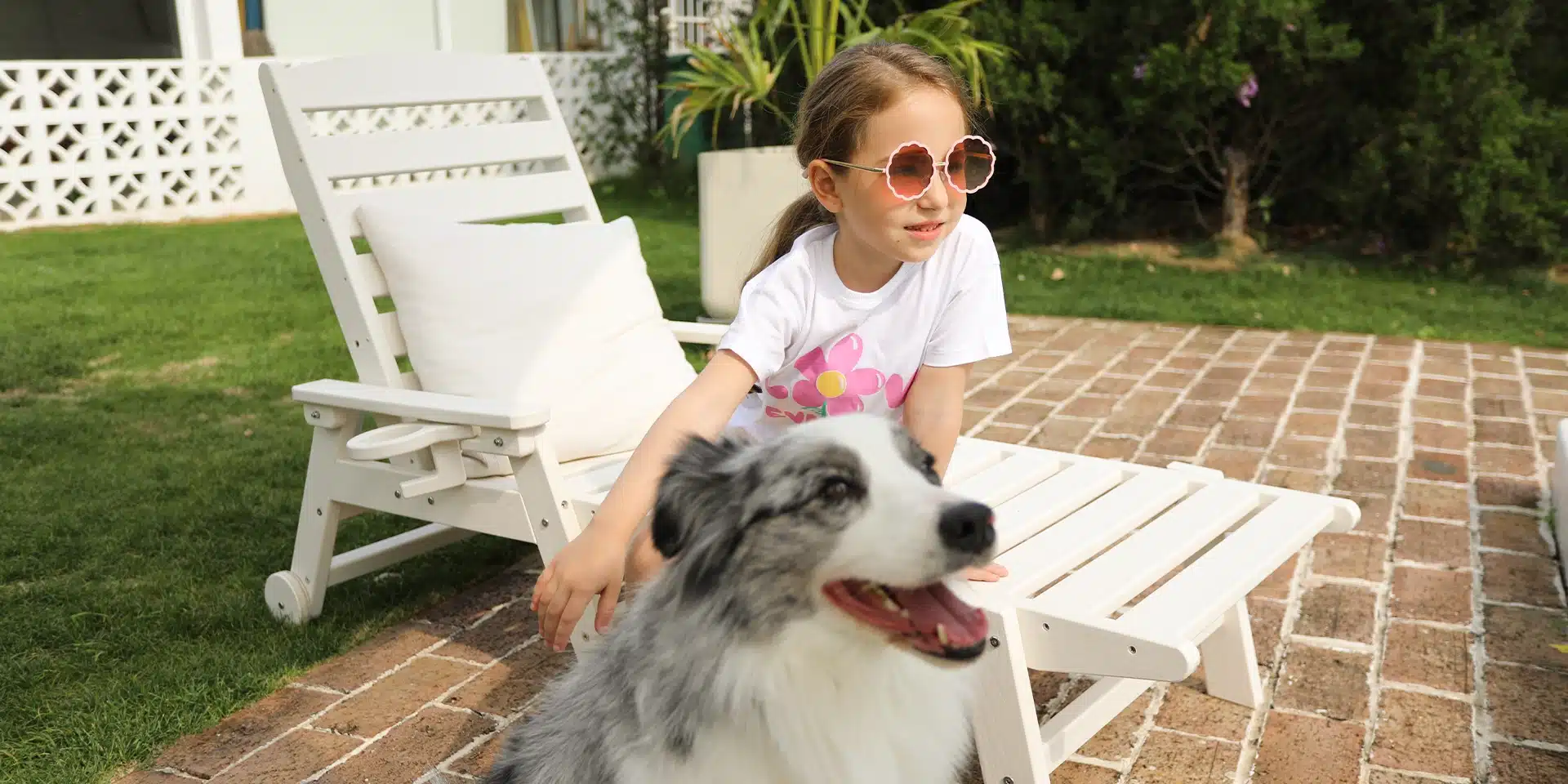
2. Secure the Perimeter
Your patio should be a safe haven where your children and pets can play without wandering off. If your patio isn’t already enclosed, consider installing a fence or barrier to secure the area. A sturdy fence not only keeps your kids and pets within sight but also prevents them from accessing potentially dangerous areas like pools, streets, or neighboring properties.
For families with pets, especially dogs, ensure the fence is high enough to prevent them from jumping over. Also, check for any gaps or loose boards where small children or pets could squeeze through.
3. Mind the Floor Surfaces
Patio floors can be slippery, especially when wet. To reduce the risk of slips and falls, choose slip-resistant materials for your patio flooring. Textured concrete, stone pavers, and outdoor tiles with a rough surface are all good options that provide better traction.
If your patio is already paved with a smooth surface, consider adding outdoor rugs with a non-slip backing. These rugs not only enhance the aesthetic appeal of your patio but also provide a safer area for your kids and pets to play on.
4. Shade and Sun Protection
Direct sunlight can be harmful to both children and pets, leading to sunburns and heat exhaustion. It’s crucial to provide adequate shade on your patio to protect your family from the sun’s harmful rays. Invest in a quality patio umbrella, a pergola, or even a retractable awning that can offer shade during the hottest parts of the day.
For added protection, you can also install UV-protective shades or curtains. These not only block out harmful UV rays but also help keep the patio cooler, making it a more comfortable space for everyone.
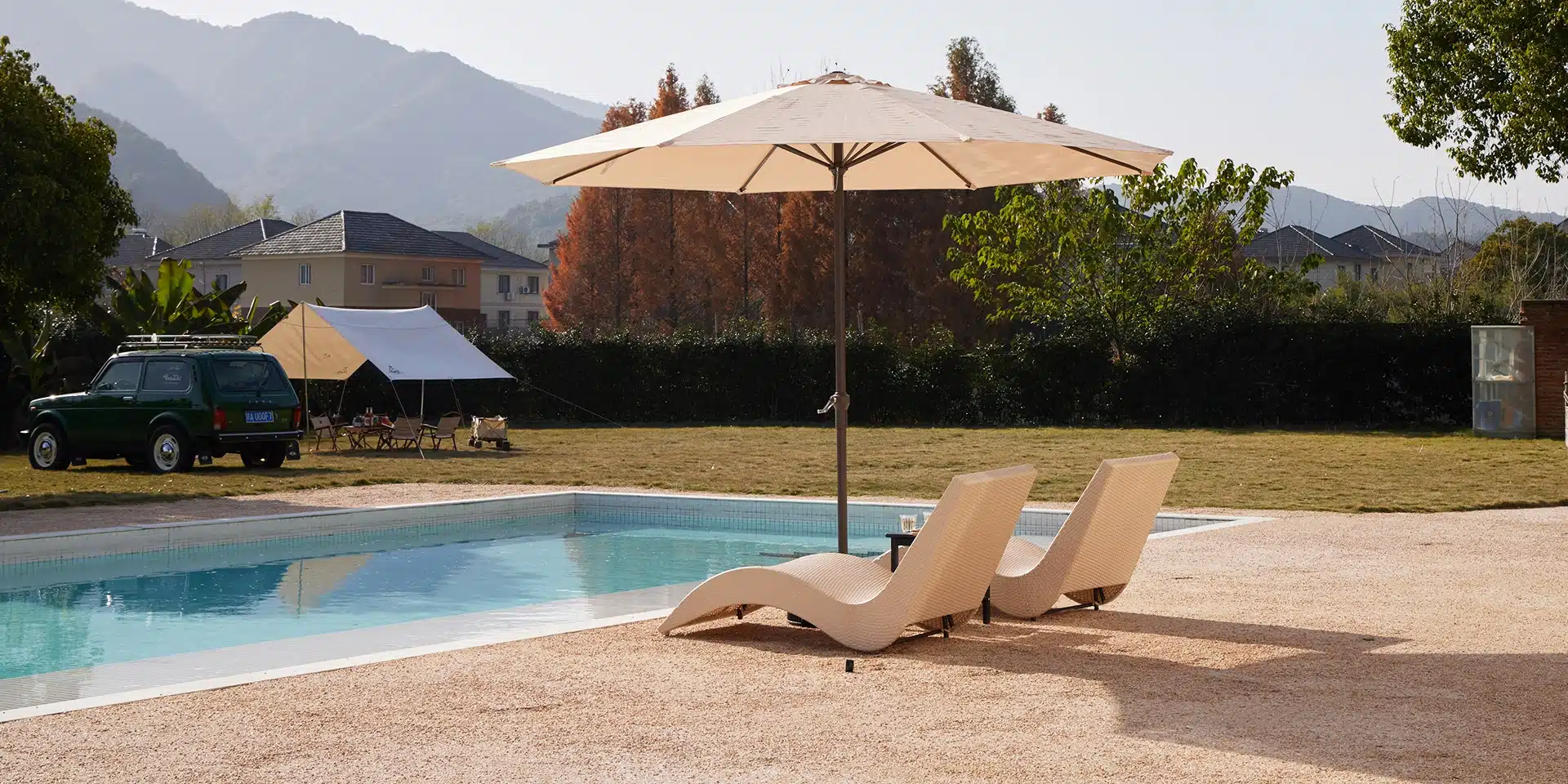
5. Store Chemicals and Tools Safely
If you use your patio for gardening or other outdoor activities, you might have tools and chemicals, such as fertilizers, pesticides, or cleaning agents, stored nearby. These items can be extremely dangerous if accessed by children or pets.
Always store chemicals and sharp tools in a locked cabinet or a high, out-of-reach location. If you use a garden shed or storage box, ensure it is childproof and securely locked. Regularly check the area for any spills or loose items that could be hazardous.
6. Supervise Water Features
Water features, such as pools, fountains, or even small ponds, can be beautiful additions to your patio but can also pose significant dangers to young children and pets. Drowning is a leading cause of accidental death in children, so it’s vital to take precautions.
For homes with pools, installing a pool fence with a self-latching gate is a must. Never leave your child or pet unattended near water, even if they know how to swim. Consider adding a pool alarm that alerts you if someone enters the water unexpectedly.
If you have smaller water features, ensure they are covered or fenced off when not in use. Additionally, empty any standing water from containers like buckets or watering cans, as even a small amount of water can pose a risk to toddlers.

7. Use Child-Safe Plants
While plants can enhance the beauty of your patio, some varieties can be toxic to both children and pets. Before planting, research the plants you intend to use and opt for non-toxic, child-safe options. Some common toxic plants to avoid include oleander, foxglove, and certain types of lilies.
In addition to choosing safe plants, be mindful of the location of your garden beds or planters. Ensure they are placed in areas where they won’t be easily knocked over or trampled by energetic kids and pets.
8. Lighting for Safety
Proper lighting is essential for ensuring your patio is safe to use during the evening and night. Install sufficient lighting to illuminate pathways, stairs, and any potential hazards. Solar-powered lights are an eco-friendly option that can be placed along walkways and around the perimeter of your patio.
Consider adding motion-sensor lights that automatically turn on when someone enters the area. This not only enhances safety but also deters intruders and wildlife from entering your patio.
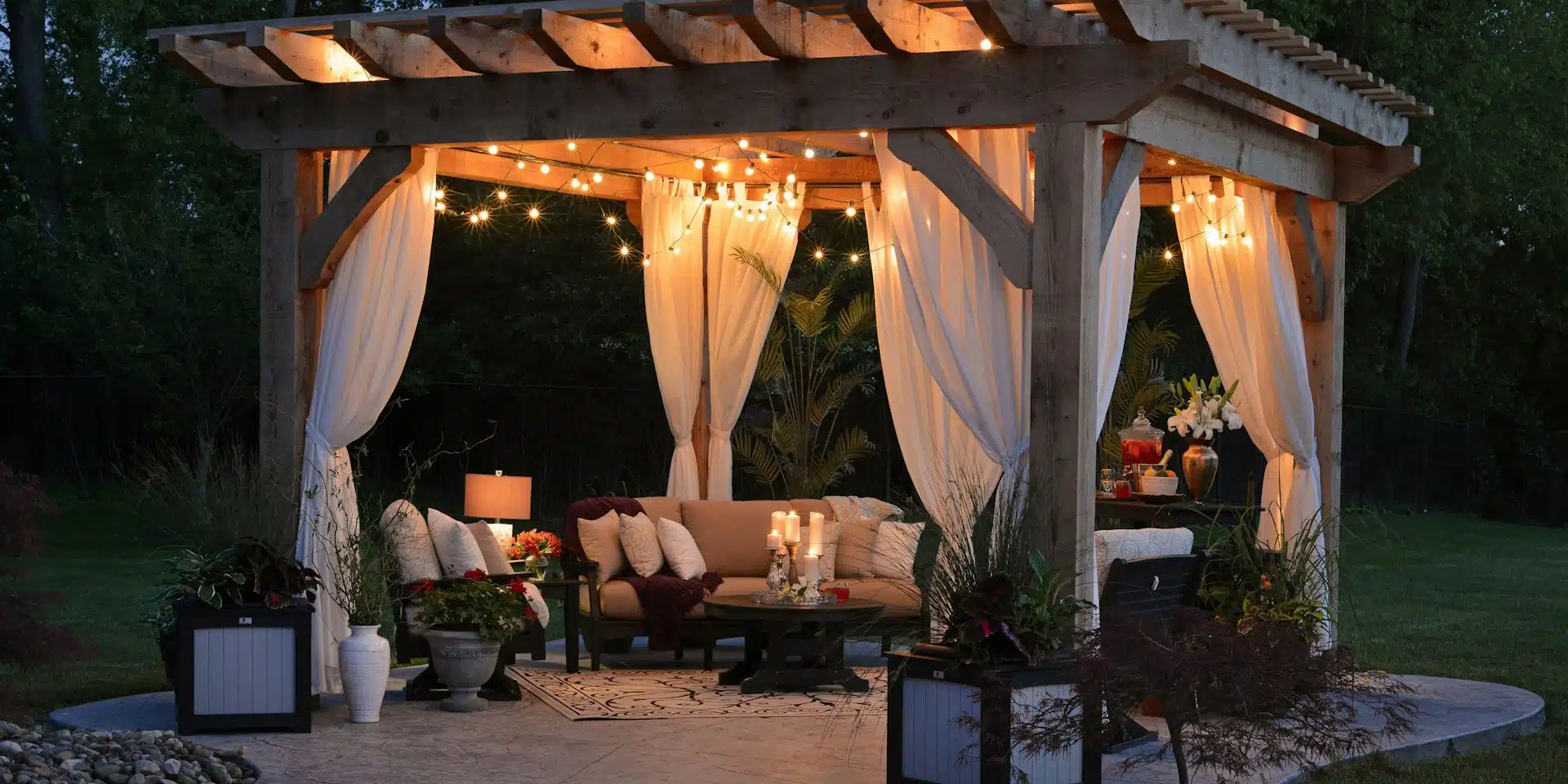
9. Keep the Patio Clean and Clutter-Free
A cluttered patio can quickly become hazardous, especially for children and pets who are prone to tripping or knocking things over. Regularly tidy up your patio by putting away toys, tools, and other items that aren’t in use. Ensure that cords from lights or electronics are safely tucked away and not posing a tripping hazard.
If you have outdoor furniture with removable cushions or pillows, store them in a weatherproof container when not in use. This not only keeps your patio looking neat but also prevents mold and mildew from forming on damp cushions.
10. Teach Kids About Patio Safety
One of the most effective ways to ensure your patio is safe is to educate your children about potential dangers and the importance of safe behavior. Teach them not to climb on furniture, avoid running on wet surfaces, and stay away from water features unless supervised.
For families with pets, it’s equally important to train them to follow basic commands and understand boundaries. This can help prevent accidents and ensure that both your kids and pets enjoy the patio safely.
11. Check for Hazards Regularly
Over time, wear and tear can cause even the safest patio to develop hazards. Regularly inspect your patio for any issues, such as loose boards, cracks in the flooring, or unstable furniture. Address these problems promptly to prevent accidents.
If you have a wooden deck, check for splinters, nails, or screws that may have come loose. Sand down any rough spots and replace damaged boards as needed. For metal furniture or railings, inspect for rust or corrosion and treat them to maintain their integrity.
12. Create a Pet-Friendly Zone
If you have pets, consider creating a designated area on your patio where they can play and relax safely. Set up a cozy corner with their favorite toys, a comfortable bed, and some water to keep them hydrated. This can help keep them occupied and less likely to get into trouble.
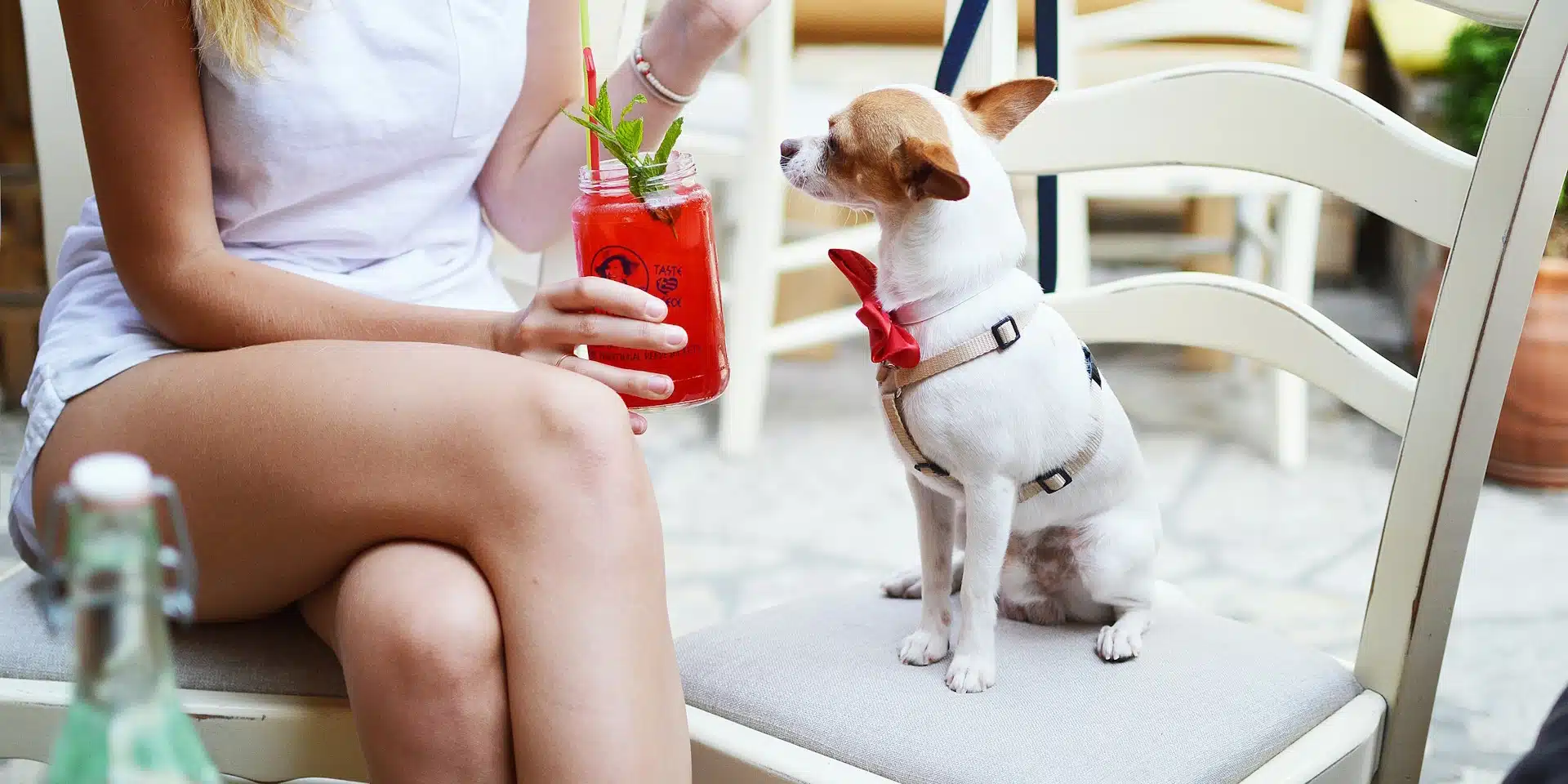
For cats, you might consider adding a catio or enclosed space where they can enjoy the outdoors without the risk of escaping. Make sure to provide some shade and a scratching post to keep them entertained.
13. Be Cautious with Fire
Many families enjoy using fire pits or outdoor heaters on their patios, but these can be dangerous if not handled properly. Always keep a safe distance between the fire and any furniture, plants, or other flammable materials.
Never leave a fire unattended, and make sure to extinguish it completely before going inside. If you have kids or pets, teach them to stay away from the fire and supervise them closely when it’s in use.
Conclusion
Creating a safe patio environment for your family, including kids and pets, involves thoughtful planning and regular upkeep. By following these outdoor safety tips, you can enjoy peace of mind knowing that your outdoor space is as safe as it is enjoyable. Whether you’re hosting a barbecue, playing with your kids, or relaxing with your pets, your patio can be a secure haven for all.

